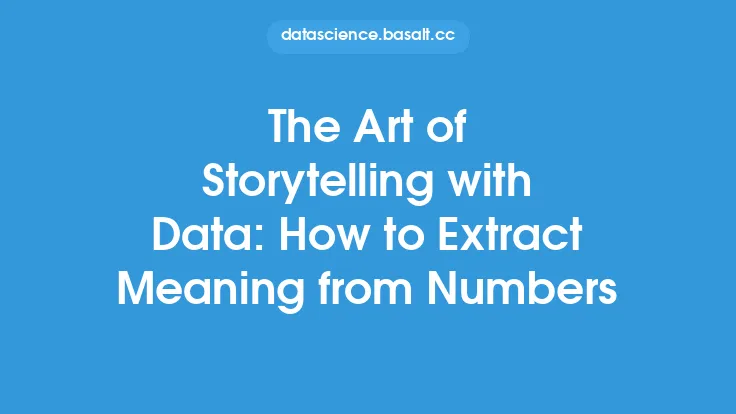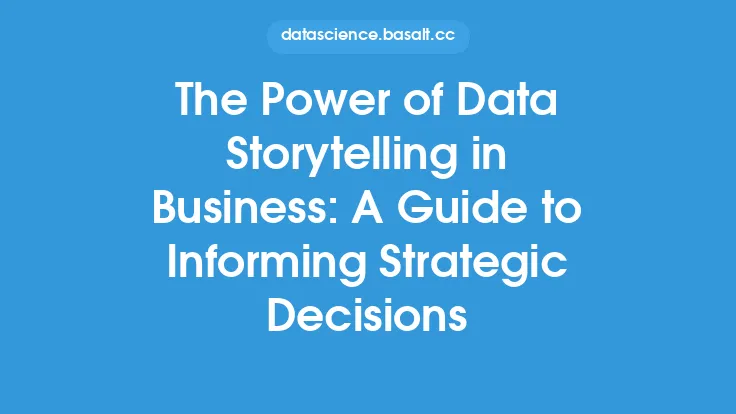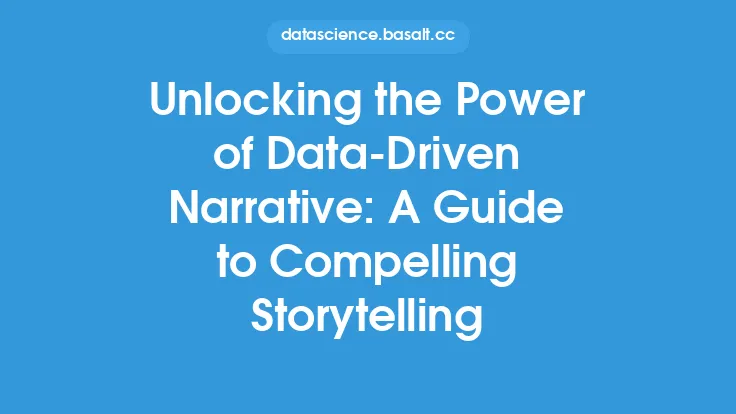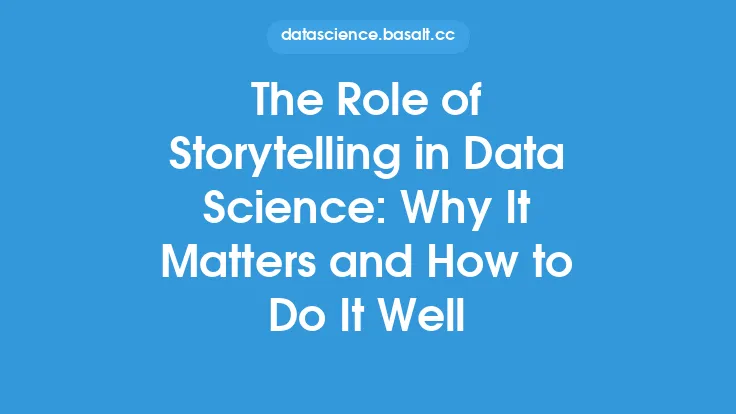The ability to extract insights from data and convey them in a meaningful way is a crucial skill in today's data-driven world. For a long time, data analysis has been focused on the technical aspects of working with numbers, with many analysts getting lost in the details of statistical models and algorithms. However, the true power of data analysis lies not in the numbers themselves, but in the stories they tell. By leveraging the power of storytelling, data analysts can transform complex data into engaging narratives that resonate with both technical and non-technical audiences.
Introduction to Data Storytelling
Data storytelling is the process of using data to tell a story that conveys insights, trends, and patterns in a way that is easy to understand and relatable. It involves using a combination of data visualization, narrative techniques, and analytical skills to create a compelling story that captures the audience's attention and communicates the key findings. Effective data storytelling requires a deep understanding of the data, the audience, and the message being conveyed. By using storytelling techniques, data analysts can create a narrative that is both informative and engaging, making it more likely that the insights will be remembered and acted upon.
The Benefits of Storytelling in Data Analysis
The benefits of storytelling in data analysis are numerous. Firstly, storytelling helps to make complex data more accessible and easier to understand. By using narrative techniques, data analysts can break down complex concepts into simple, easy-to-follow stories that resonate with the audience. Secondly, storytelling helps to create an emotional connection with the audience, making it more likely that the insights will be remembered and acted upon. Finally, storytelling provides a framework for communicating insights in a way that is both informative and engaging, making it an essential skill for data analysts who want to communicate their findings effectively.
The Components of a Data Story
A data story typically consists of several key components, including a clear and concise narrative, effective data visualization, and a strong analytical foundation. The narrative provides the context and framework for the story, while the data visualization helps to illustrate the key findings and trends. The analytical foundation provides the basis for the insights and recommendations, ensuring that the story is grounded in reality. By combining these components, data analysts can create a compelling narrative that communicates the key findings and insights in a way that is both informative and engaging.
The Role of Data Visualization in Storytelling
Data visualization plays a critical role in storytelling, as it provides a way to illustrate complex data in a simple and intuitive way. Effective data visualization helps to communicate the key findings and trends, making it easier for the audience to understand and engage with the story. There are many different types of data visualization, including charts, graphs, and maps, each with its own strengths and weaknesses. By choosing the right type of visualization, data analysts can create a clear and concise narrative that communicates the key insights and findings.
Best Practices for Data Storytelling
There are several best practices that data analysts can follow to create effective data stories. Firstly, it's essential to know the audience and tailor the story accordingly. This involves understanding the audience's level of technical expertise, their interests, and their needs. Secondly, it's crucial to keep the story simple and focused, avoiding unnecessary complexity and jargon. Finally, it's essential to use effective data visualization and narrative techniques to communicate the key findings and insights. By following these best practices, data analysts can create compelling data stories that resonate with their audience and communicate the key insights and findings.
Technical Aspects of Data Storytelling
From a technical perspective, data storytelling involves a range of skills and tools, including data visualization software, statistical modeling, and data manipulation. Data analysts use a range of techniques, including data mining, machine learning, and statistical analysis, to extract insights from the data. They then use data visualization software, such as Tableau or Power BI, to create interactive and dynamic visualizations that communicate the key findings. By leveraging these technical skills and tools, data analysts can create complex and sophisticated data stories that provide deep insights into the data.
Common Challenges in Data Storytelling
Despite the many benefits of data storytelling, there are several common challenges that data analysts face. Firstly, it can be difficult to communicate complex technical concepts in a simple and intuitive way. Secondly, it's challenging to create a narrative that resonates with a non-technical audience. Finally, it's essential to ensure that the story is grounded in reality, avoiding misinterpretation and bias. By being aware of these challenges, data analysts can take steps to overcome them, creating effective data stories that communicate the key insights and findings.
Conclusion
In conclusion, the power of storytelling in data analysis is a game-changer for data analysts who want to communicate their findings effectively. By leveraging the power of narrative, data visualization, and analytical skills, data analysts can create compelling data stories that resonate with both technical and non-technical audiences. Whether it's communicating insights to stakeholders, creating interactive dashboards, or simply telling a story with data, the art of data storytelling is an essential skill for anyone working with data. By following best practices, using effective data visualization, and leveraging technical skills and tools, data analysts can unlock the full potential of their data and create stories that inform, engage, and inspire.





